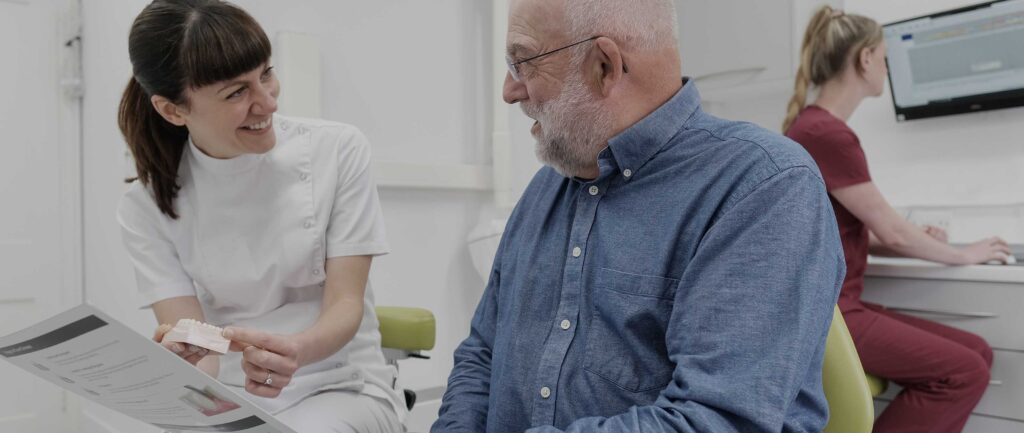
Understanding PPC Advertising in the Dental Industry
Definition and Basics of PPC
Pay-per-click (PPC) advertising is a model where advertisers pay a fee each time their ad is clicked. It’s a way of buying visits to your site, rather than earning them organically. In the dental industry, PPC can help practices reach potential patients who are actively searching for dental services online.
Common Platforms for Dental PPC Campaigns
Several platforms are popular for dental marketing through PPC. These include:
- Google Ads: The most widely used platform, offering extensive reach and targeting options.
- Facebook Ads: Great for targeting specific demographics and interests.
- Bing Ads: Often overlooked, but can be cost-effective and reach a different audience.
Key Metrics to Monitor
To ensure the success of a PPC campaign, it’s crucial to monitor key metrics. These include:
- Click-Through Rate (CTR): Measures how often people click on your ad after seeing it.
- Cost Per Click (CPC): The amount you pay for each click on your ad.
- Conversion Rate: The percentage of clicks that result in a desired action, like booking an appointment.
Keeping an eye on these metrics helps dental practices optimize their campaigns and get the best return on investment.
Benefits of PPC Advertising for Dental Practices
Increased Patient Acquisition
PPC advertising can significantly boost patient numbers for dental practices. By targeting specific keywords and demographics, practices can attract potential patients actively searching for dental services. This method ensures that marketing efforts are directed towards individuals who are more likely to convert into actual patients.
Enhanced Local Visibility
For dental practices, local visibility is crucial. PPC campaigns can be tailored to target local audiences, ensuring that ads are shown to people within a specific geographic area. This localized approach helps in attracting nearby patients, making it a vital part of dental practice marketing.
Cost-Effective Marketing
PPC advertising offers a cost-effective solution for dental practices looking to maximize their marketing budget. Unlike traditional advertising methods, PPC allows for precise budget control and only charges when someone clicks on the ad. This pay-per-click model ensures that marketing dollars are spent efficiently, providing a higher return on investment.
In the realm of digital marketing for dentists, PPC stands out as a powerful tool that combines cost-efficiency with targeted reach, making it an essential component of seo marketing for dentists.
Challenges and Pitfalls of PPC Advertising
High Competition and Bidding Wars
In the world of PPC advertising, dental practices often face intense competition. Many dental clinics are vying for the same keywords, leading to bidding wars. This can drive up the cost-per-click (CPC) and make it harder for smaller practices to compete. It’s crucial to find a balance between bidding high enough to be competitive and staying within budget.
Managing Budget and ROI
One of the biggest challenges in PPC advertising is managing the budget effectively. Dental practices need to ensure that their ad spend is generating a positive return on investment (ROI). This involves constant monitoring and tweaking of campaigns to ensure that money is being spent wisely. Without careful management, it’s easy to overspend and see little return.
Ad Fatigue and Banner Blindness
Over time, potential patients may become tired of seeing the same ads repeatedly, a phenomenon known as ad fatigue. This can lead to a decrease in click-through rates and overall effectiveness of the campaign. Additionally, many internet users have developed banner blindness, where they subconsciously ignore banner ads. To combat this, it’s important to regularly update ad creatives and try different formats to keep the audience engaged.
Navigating the challenges of PPC advertising requires a strategic approach and constant vigilance. Dental practices must be prepared to adapt and refine their strategies to stay ahead in a competitive landscape.
Strategies for Effective PPC Campaigns
Keyword Research and Selection
Choosing the right keywords is the foundation of a successful PPC campaign. Focus on keywords that potential patients are likely to use when searching for dental services. Use tools like Google Keyword Planner to find relevant keywords and assess their search volume and competition. Long-tail keywords can be particularly effective as they often have lower competition and higher intent.
Ad Copy and Creative Design
Your ad copy should be compelling and directly address the needs of your target audience. Highlight unique selling points, such as special offers or advanced dental technology. Use clear and concise language, and include a strong call-to-action (CTA) to encourage clicks. Creative design elements, like high-quality images or engaging videos, can also enhance the effectiveness of your ads.
Landing Page Optimization
Once a potential patient clicks on your ad, they should be directed to a well-designed landing page that matches the ad’s message. Ensure the landing page is user-friendly, loads quickly, and provides all necessary information. A clear and easy-to-find contact form or booking button can significantly increase conversion rates. Regularly test and update your landing pages to improve performance.
Measuring the Success of PPC Campaigns
Tracking Conversions and Leads
To know if your PPC campaign is working, you need to track conversions and leads. Conversions are actions you want visitors to take, like booking an appointment or filling out a contact form. Leads are potential patients who show interest in your services. Use tools like Google Analytics to monitor these metrics.
Keeping an eye on conversions and leads helps you understand what’s working and what needs improvement.
Analyzing Click-Through Rates
Click-through rates (CTR) show how often people click on your ads. A high CTR means your ad is interesting and relevant. To improve CTR, make sure your ad copy is clear and your keywords match what people are searching for.
Evaluating Return on Investment
Return on Investment (ROI) tells you if your PPC campaign is worth the money. Calculate ROI by comparing the money you spend on ads to the revenue you earn from new patients. A positive ROI means your campaign is successful. If not, you may need to adjust your strategy.
- Track conversions and leads
- Analyze click-through rates
- Evaluate return on investment
Case Studies of Successful Dental PPC Campaigns
Small Practice Success Stories
Small dental practices have seen remarkable results with PPC advertising. One small practice increased its patient base by 50% in just six months by targeting local keywords and optimizing their ad copy. They focused on specific services like teeth whitening and emergency dental care, which attracted more local patients.
Large Practice Campaigns
Larger dental practices often have bigger budgets, allowing for more extensive PPC campaigns. One large practice used a combination of Google Ads and Facebook Ads to reach a broader audience. They segmented their audience based on age and dental needs, resulting in a 30% increase in new patient appointments.
Innovative Approaches and Techniques
Some dental practices are using innovative techniques to stand out in the crowded PPC space. For example, one practice used video ads to showcase patient testimonials and office tours. This approach not only increased click-through rates but also built trust with potential patients.
By focusing on unique selling points and leveraging multimedia, dental practices can significantly enhance their PPC campaign performance.
Future Trends in Dental PPC Advertising
Emerging Technologies and Tools
The world of PPC advertising is always changing, and dental practices need to keep up. New technologies and tools are making it easier to target the right audience. For example, AI and machine learning can help create more effective ads by analyzing data and predicting what works best.
Shifts in Consumer Behavior
People’s habits are changing, and this affects how they respond to ads. More people are using mobile devices to search for dental services. This means that ads need to be mobile-friendly. Also, consumers are looking for more personalized experiences, so ads that speak directly to their needs are more effective.
Regulatory Changes and Compliance
Laws and rules about advertising are always changing. Dental practices need to stay updated to avoid fines and other problems. This includes understanding privacy laws and making sure ads are truthful and not misleading.
Staying ahead of these trends can give dental practices a big advantage in their PPC campaigns.
Conclusion
In summary, PPC advertising can greatly benefit dental practices by attracting more patients and increasing revenue. However, it’s important to carefully plan and manage these campaigns to get the best results. By understanding the costs, targeting the right audience, and continuously monitoring performance, dental practices can make the most out of their PPC efforts. In the end, a well-executed PPC strategy can lead to significant growth and success for dental practices.






